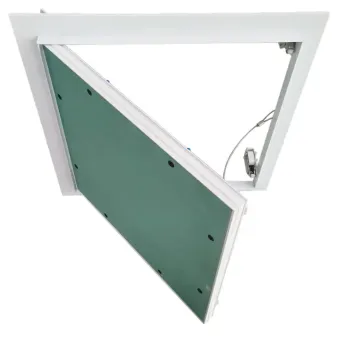- Afrikaans
- Albanian
- Amharic
- Arabic
- Armenian
- Azerbaijani
- Basque
- Belarusian
- Bengali
- Bosnian
- Bulgarian
- Catalan
- Cebuano
- Corsican
- Croatian
- Czech
- Danish
- Dutch
- English
- Esperanto
- Estonian
- French
- German
- Greek
- Hindi
- Indonesian
- irish
- Italian
- Japanese
- Korean
- Lao
- Malay
- Myanmar
- Norwegian
- Norwegian
- Polish
- Portuguese
- Romanian
- Russian
- Serbian
- Spanish
- Swedish
- Thai
- Turkish
- Ukrainian
- Uzbek
- Vietnamese
get a quote
Mar . 04, 2025 01:09 Back to list
cross tees suspended ceiling
The modern architectural landscape has seen a growing preference for suspended ceilings, also known as drop ceilings, to enhance aesthetic appeal and acoustic performance in commercial and residential spaces. Among the components of these systems, cross tees play a pivotal role, acting as the skeleton that holds the ceiling tiles securely in place. For anyone involved in construction or renovation, understanding the significance, installation, and maintenance of cross tees in suspended ceilings is vital, not only to ensure structural integrity but also to achieve architectural ambitions.
One key advantage of using cross tees in a suspended ceiling is the ease of access they provide to overhead utilities and voids. Maintenance personnel and electricians can quickly remove ceiling tiles to inspect or repair wiring, plumbing, and HVAC systems without dismantling the entire ceiling. This accessibility significantly reduces the time and labor costs associated with building maintenance and emergency repairs. A cross tee’s condition impacts not only the aesthetic appeal and safety of a ceiling but also contributes to broader building performance metrics, such as acoustics and energy efficiency. Cross tees help create a gap between the structural ceiling and the drop ceiling, which can be used to install insulation materials that improve thermal efficiency and reduce noise transmission. Customizing cross tee materials and sizes based on specific acoustic and thermal requirements can enhance a building’s overall environmental performance. Moreover, the industry continues to innovate in cross tee technology, with improvements in materials offering enhanced performance characteristics. Advanced cross tees now incorporate design features that allow for quick assembly, ease of modification, and increased load capacities, making them suitable for complex architectural designs and high-performance building specifications. In proactively selecting superior cross tees for a suspended ceiling grid, builders effectuate broader design flexibility and sustainability. The right choice in cross tees ensures the ceiling system meets rigorous building codes and industry standards, adhering to the principles of safety, efficiency, and sustainability. Professionals who understand and prioritize the selection and maintenance of cross tees are seen as authorities in the field, offering credible advice rooted in industry expertise and experience. In conclusion, cross tees serve as a foundational element in suspended ceiling systems, blending functionality with design aesthetics. Their role is not only to provide structure and support but also to enhance the operational capabilities of the space they enclose. Those involved in construction and building maintenance must prioritize the quality and proper installation of cross tees to guarantee the long-term performance and safety of the buildings they oversee.


One key advantage of using cross tees in a suspended ceiling is the ease of access they provide to overhead utilities and voids. Maintenance personnel and electricians can quickly remove ceiling tiles to inspect or repair wiring, plumbing, and HVAC systems without dismantling the entire ceiling. This accessibility significantly reduces the time and labor costs associated with building maintenance and emergency repairs. A cross tee’s condition impacts not only the aesthetic appeal and safety of a ceiling but also contributes to broader building performance metrics, such as acoustics and energy efficiency. Cross tees help create a gap between the structural ceiling and the drop ceiling, which can be used to install insulation materials that improve thermal efficiency and reduce noise transmission. Customizing cross tee materials and sizes based on specific acoustic and thermal requirements can enhance a building’s overall environmental performance. Moreover, the industry continues to innovate in cross tee technology, with improvements in materials offering enhanced performance characteristics. Advanced cross tees now incorporate design features that allow for quick assembly, ease of modification, and increased load capacities, making them suitable for complex architectural designs and high-performance building specifications. In proactively selecting superior cross tees for a suspended ceiling grid, builders effectuate broader design flexibility and sustainability. The right choice in cross tees ensures the ceiling system meets rigorous building codes and industry standards, adhering to the principles of safety, efficiency, and sustainability. Professionals who understand and prioritize the selection and maintenance of cross tees are seen as authorities in the field, offering credible advice rooted in industry expertise and experience. In conclusion, cross tees serve as a foundational element in suspended ceiling systems, blending functionality with design aesthetics. Their role is not only to provide structure and support but also to enhance the operational capabilities of the space they enclose. Those involved in construction and building maintenance must prioritize the quality and proper installation of cross tees to guarantee the long-term performance and safety of the buildings they oversee.
Next:
Latest news
-
PVC Laminated Gypsum Ceiling Board OverviewNewsApr.11,2025
-
Mineral Fiber Ceiling Tiles Price Analysis and ComparisonsNewsApr.11,2025
-
Crafts of Mineral Fiber Ceiling Tile ManufacturingNewsApr.11,2025
-
Difference Between Gypsum and PVC CeilingNewsApr.11,2025
-
An Overview of Mineral Fiber Ceiling TilesNewsApr.11,2025
-
Advantages of PVC Gypsum CeilingNewsApr.08,2025







